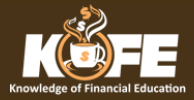The EAP has run a few Grief Support Groups over the years. All of them have been well received. So, a new one will run from October 9, 2018-December 11, 2018 on Tuesdays at noon. Feel free to bring your lunch if necessary. Please call the EAP at 667.214.1555 to register for the group, or if you have any questions. Also, you can email us at mmccarre@som.umaryland.edu. to register for the group.
Walk-in Appointments
The EAP will be launching a new program in September! On Tuesday mornings (9:00-12:30 p.m.) the EAP will have walk-in service available. No appointment is necessary. Come right over to 419 West Redwood Street, Suite 560 and an EAP counselor will be able to meet with you. The program will run from September 11-December 31st, 2018.
Reiki in June
Back by popular demand, Reiki treatment will be offered again in the EAP for a limited time only. Our MSW intern, Kara, will be graduating in July, but can offer Reiki to employees for the month of June (on Tuesdays and Thursdays) before she leaves us. If you want to make an appointment for a Reiki session please call the EAP at 667.214.1555.
Celebrate Heart Health for Women!
February is Heart Healthy Month for Women
https://www.goredforwomen.org/fight-heart-disease-women-go-red-women-official-site/know-your-risk/know-your-numbers/
Holiday Stress?
If the added stress of the holidays is getting you down, please make an appointment in the EAP. We can help!
Learn How to Do Reiki on Yourself
How would you like to learn how to do Reiki on yourself? The EAP will be hosting a workshop beginning Tuesday, November 28, 2017. There will be 3 classes as part of the workshop, plus an individual Attunement by a Reiki Master. Then, you will be ready to do Reiki on yourself. Call the EAP at 667.214.1555 to reserve your spot in the workshop. Space is limited. For more information about Reiki or the workshop, please email Kara at kkeicher@som.umaryland.edu
Summer Break
It is good for your mental health to take breaks from work. Summer is a good time to do that. Even a few days away from the office can be helpful.
See this link to learn more:
http://www.medicaldaily.com/health-benefits-vacation-5-reasons-go-away-summer-246530
Trauma Survivors-Support Group
The EAP will is in the process of creating a Support Group for people who have experienced trauma in their lives. Trauma comes in many different forms: abuse, neglect, bullying, war, accidents, sudden loss of a support system, etc. The group will focus on the recovery part of the trauma. It will be held during lunch time in the EAP. If you are interested in knowing more about this group, please contact Maureen at mmccarre@som.umaryland.edu or call her at 667.214.1560.
Reiki will be offered in the EAP January-July 2017
What is Reiki?
Definition
Purpose
Description
Origins
Grief Support Group, March 2017
The EAP has had such a positive response from the Grief Support Groups we have run, we decided to have another one in the Fall. If you are interested in registering, or if you have questions, please call the EAP at 667.214.1555.
 Click to Call
Click to Call